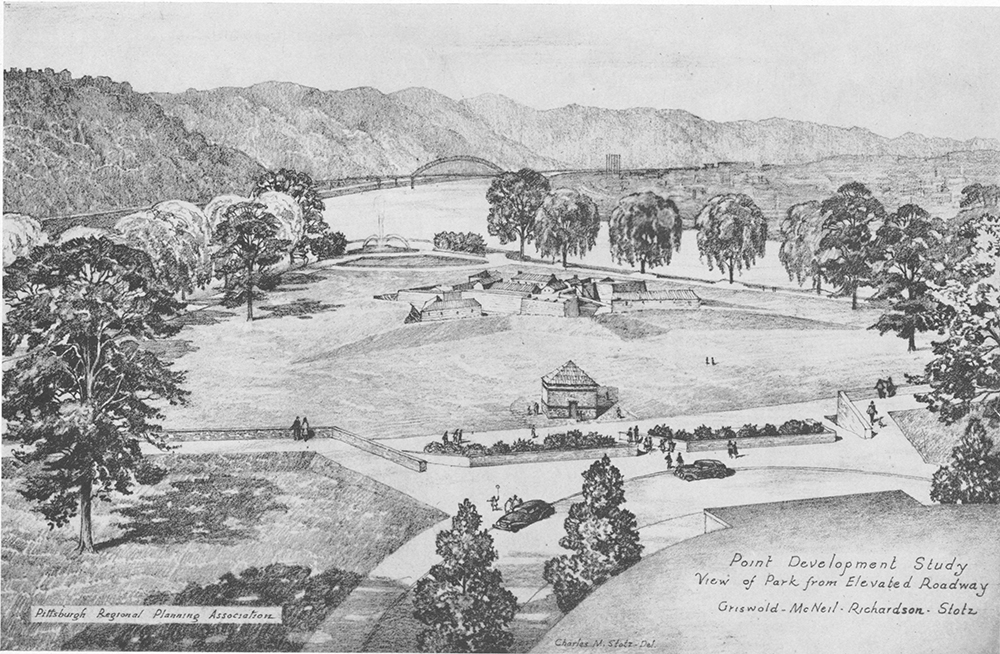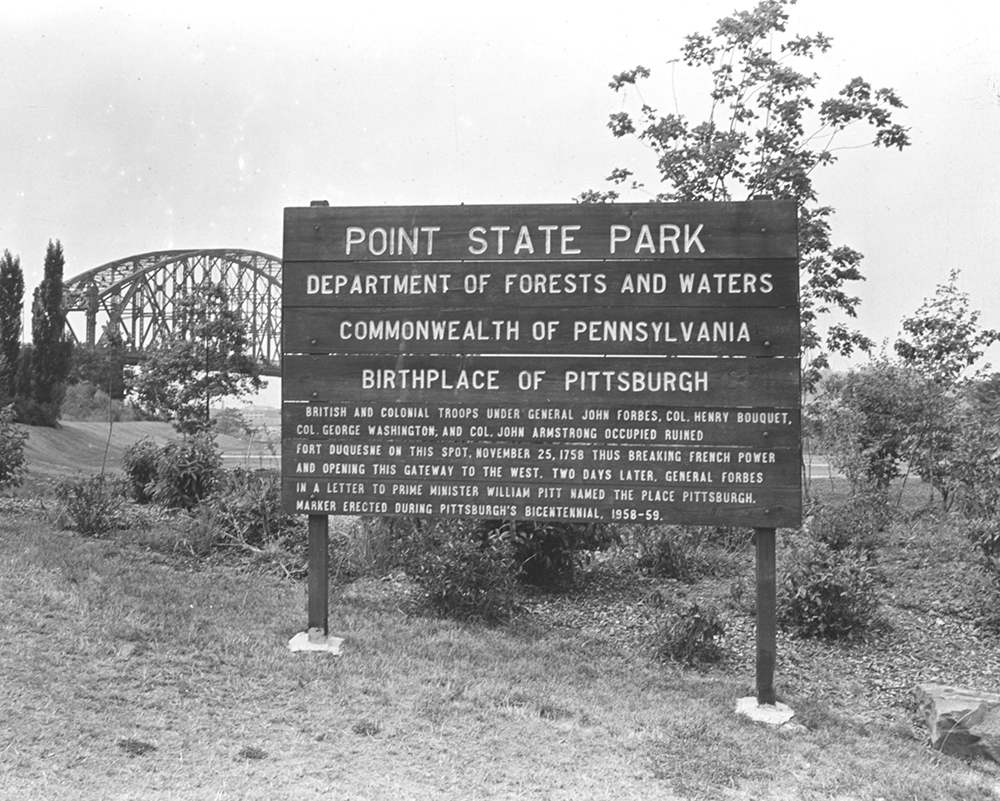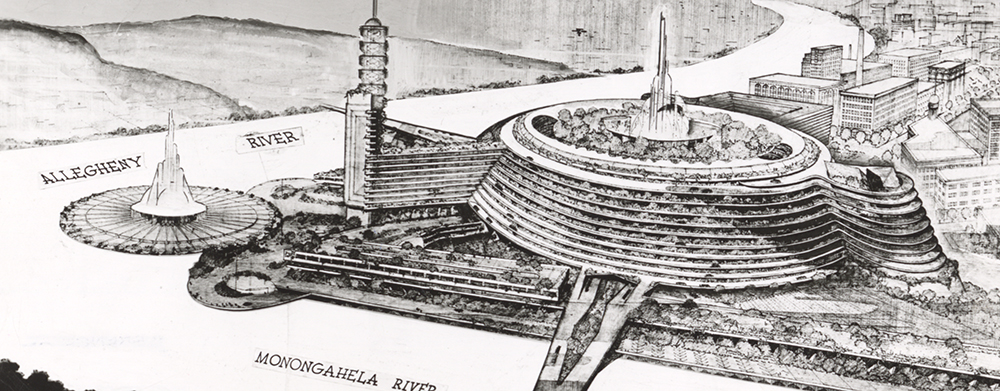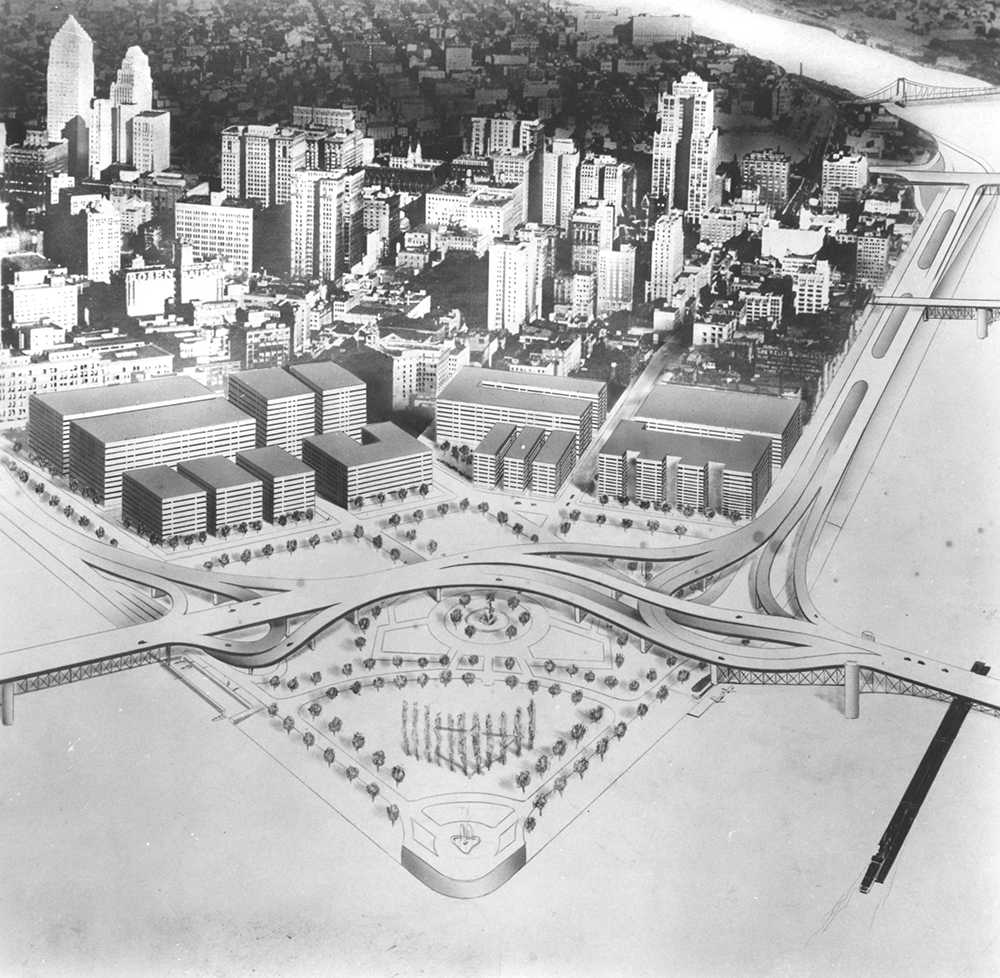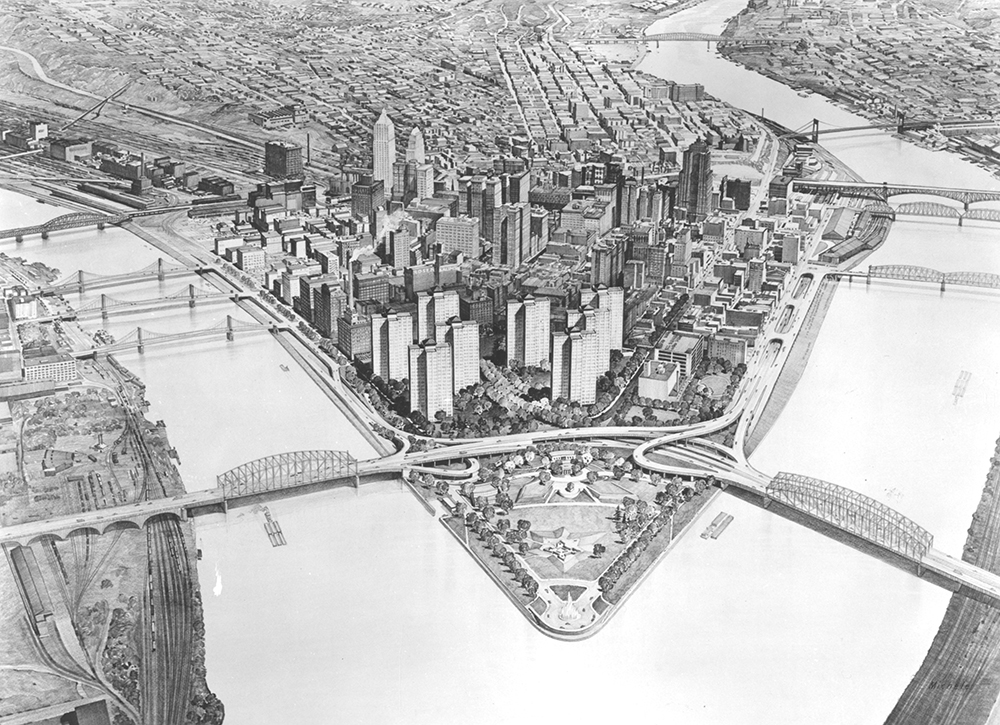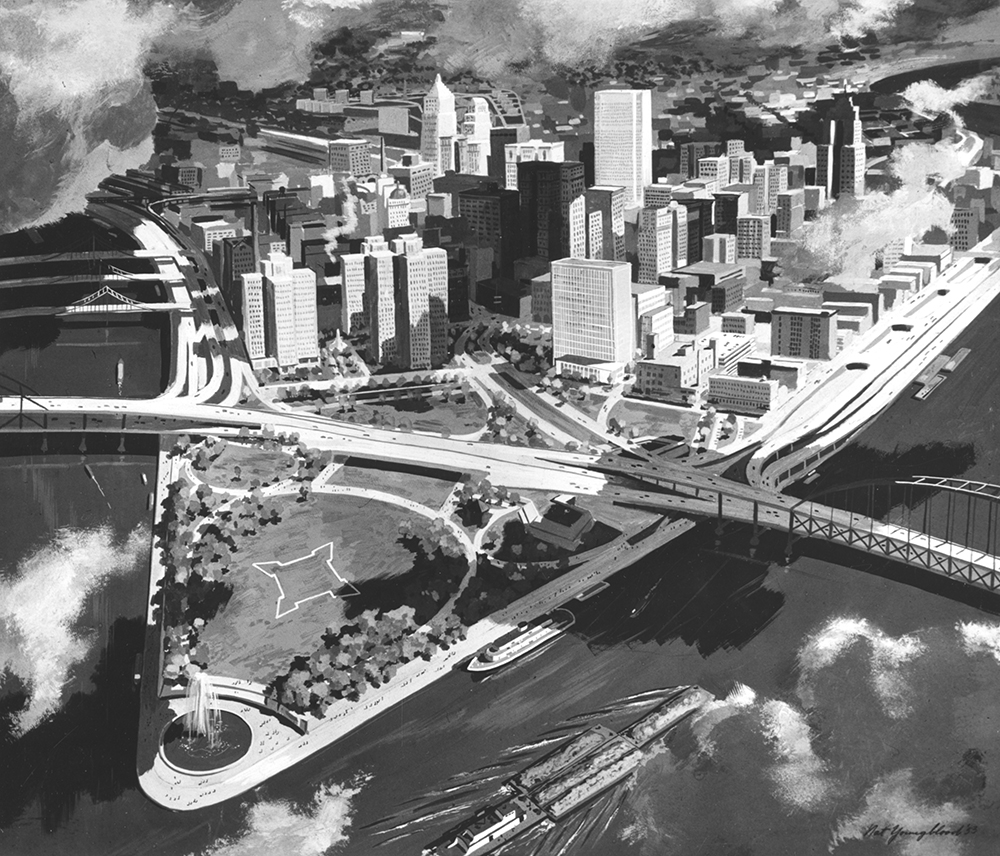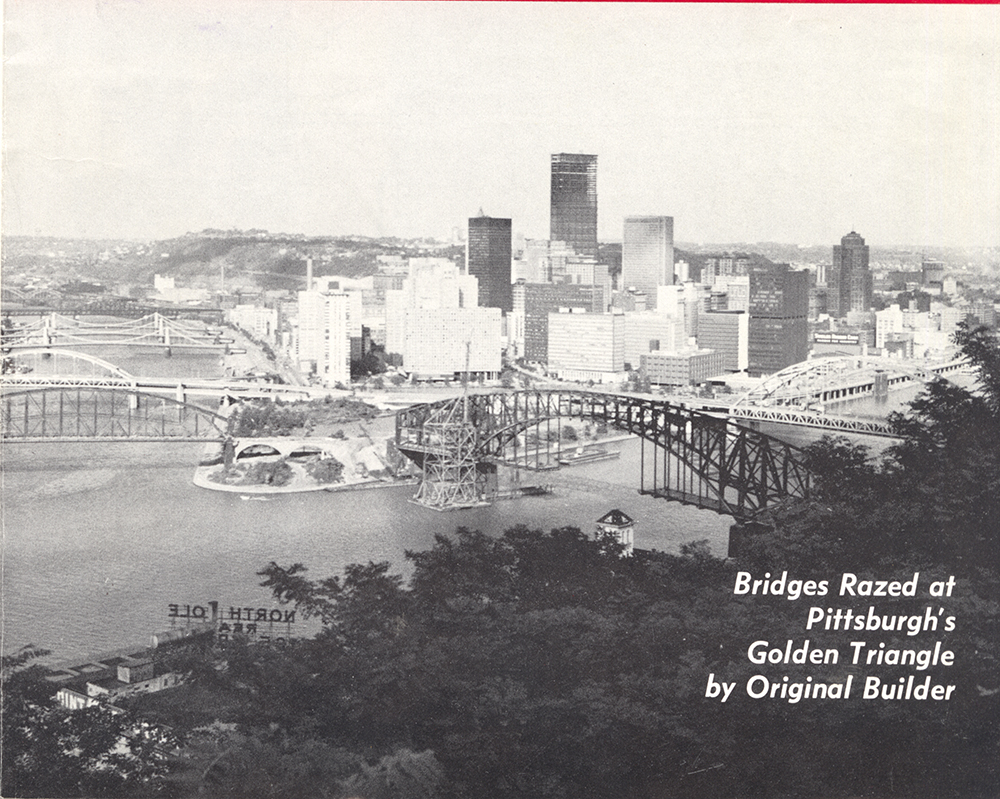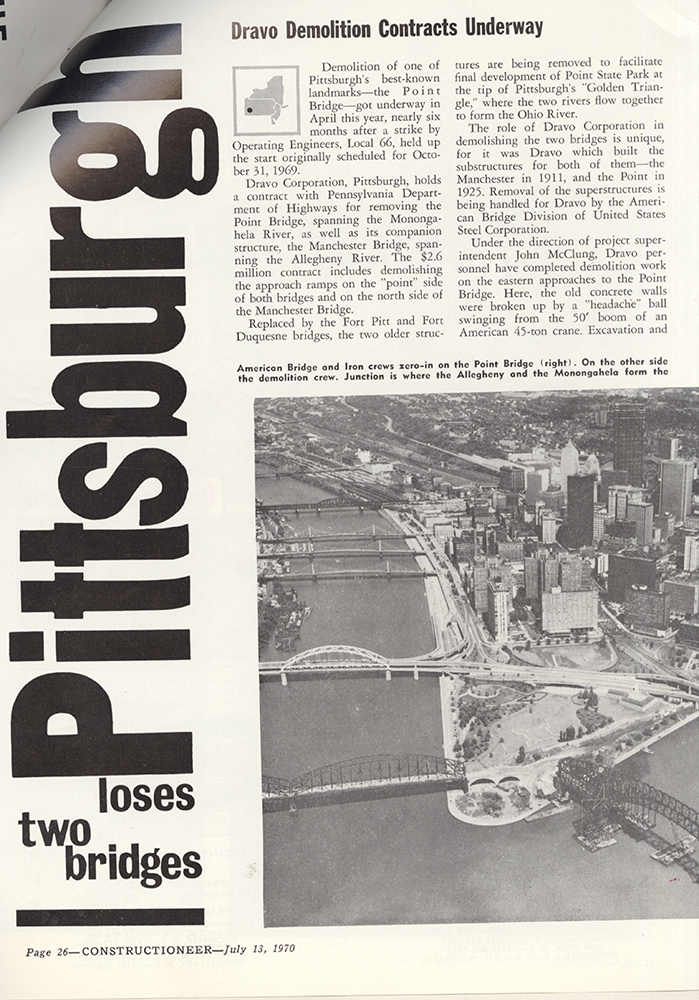The Fort Pitt Museum will celebrate its 50th year in 2019.
Planning for the museum and Point State Park began as early as the 1830s when Pittsburgh Mayor James McClintock called for development of the wharves and a park. Many different ideas went into the park’s planning, including who to memorialize and how to utilize the unique space at the Forks of the Ohio River to honor history, attract new businesses and residents, and bring Pittsburgh into the modern age.
Enjoy five fascinating Fort Pitt facts as we count down the days until our 50th year:
1. In 1930, Pa. Senator David A. Reed called for the establishment of a memorial at the Point to George Rogers Clark and those that established Pittsburgh as the Gateway to the West. Allegheny County Planning Commissioner A. Marshall Bell and local architect Edward B. Lee submitted a proposal that included a tall illuminated monument to Clark, pioneer museum and park, town hall, historic monument site and park, water park and boat landings, parking spaces, and space set aside for future memorials. Theirs was one of many plans submitted, including a cantilever design by Frank Lloyd Wright.
2. On March 26, 1938, the Historical Society of Western Pennsylvania, more commonly known now as the Senator John Heinz History Center, National Park Service, and newly created Point Park Commission, hosted a 600-person dinner at the William Penn Hotel to outline the Commission’s plans to create a national park and shrine dedicated to George Washington at the Forks of the Ohio. Progress was halted in 1941 with the onset of World War II.
3. A Development Study published in November 1945 by the Pittsburgh Regional Planning Association discussed how the highways, rivers, and fort sites could work together to create an historic and aesthetically pleasing park. Charles M. Stotz was the study’s architect. He suggested a full reconstruction of Fort Duquesne stating in his report, “Of all these forts the largest and most pretentious was … Fort Pitt, but the most significant historically was Fort Duquesne which stood as the symbol of French occupation…there was indeed a great question whether the civilization of inland America would be French or British.”
4. The same company that participated in the construction of the 1911 Point and 1925 Manchester Bridges, which were replaced by the Fort Pitt and Fort Duquesne Bridges, was responsible for their demolition in 1970 – Dravo Corporation.
5. The Fort Pitt Museum was not fully opened or dedicated until 1969, but its William Pitt Memorial Hall opened to visitors on July 3, 1967. The museum had three staff members: Museum Director L. R. Bailey, a historic sites archaeologist; Curator John W. Harpster, a Wilkinsburg native who attended and taught at the University of Pittsburgh, worked for the Pennsylvania Historical and Museum Commission, and was an archivist for the Historical Society of Western Pennsylvania; and Museum Secretary Elizabeth Hood, who had worked for the Pennsylvania Historical and Museum Commission for seven years and was associated with the War History Commission, The Pennsylvania Society Federation of Junior Historians, and the William Penn Tercentenary Committee. After being open for two days, the staff noted that 2,000 visitors had walked through the one-third of the museum that was open – William Pitt Memorial Hall.
Kathleen Lugarich is the education manager at the Fort Pitt Museum.

